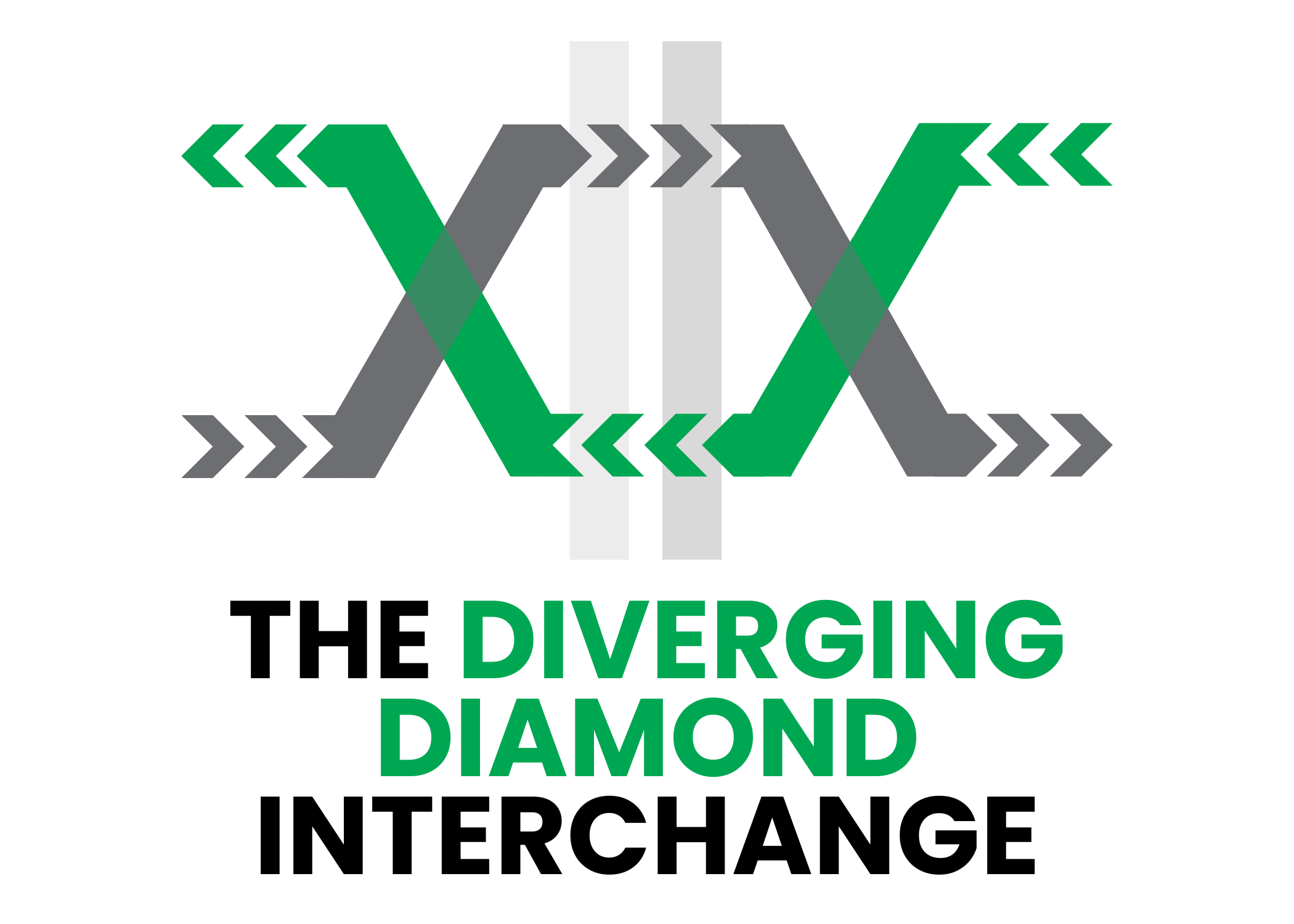We’ve all been stuck for what feels like forever at a busy intersection, especially while trying to turn left. A new type of interchange is addressing this very problem.
The diverging diamond interchange (DDI), also known as a double crossover diamond (DCD), was created to make otherwise busy intersections more efficient for traffic flow and safer for both drivers and pedestrians.
An overview of the DDI
A DDI works differently than another kind of interchange, with crossover points at both the beginning and end to reduce the number of conflict points with other vehicles. Essentially, the interchange takes traffic lanes over to the left then back again, eliminating the need for drivers to make an unprotected left while vehicles are approaching.
DDIs are constructed on busy intersection areas, typically involving a bridge or a connection to a busy freeway. The U.S. Department of Transportation says it’s almost “always worth considering” the DDI option for an interchange, but particularly in cases where:
- There is a heavy volume of left turns onto a freeway,
- There are “moderate but unbalanced crossroad traffic volumes through the interchange,”
- There are left turn safety concerns, or
- There is a need for additional capacity without widening an existing bridge.
A safe option
There are many benefits of the DDI, and safety is a huge factor. In fact, according to USDOT, compared to a traditional diamond interchange, the DDI has been shown to reduce “vehicle-to-vehicle contact points by nearly 50%.” In addition, it reduces severe crash types.
The first DDI was installed in Springfield, Missouri, in 2009. A study on crashes was conducted one year after its installation and compared to the average of the five years prior,
- Left turn crashes were eliminated completely,
- Right angle crashes were reduced by 72%,
- Rear right crashes were reduced by 29%, and
- Total crashes were reduced by 46%.
An efficient option
The DDI is also a very efficient type of interchange for travelers. When left turns are eliminated, traffic is able to flow smoothly along busy freeways.
According to the USDOT, a study that compared diverging diamond designs to more conventional interchanges showed that the DDI option reduces traffic delay by 15% to 60% and increases flow by 10% to 30%.
Driving through a DDI can take some getting used to, and our friends in Florida have published an explanatory video. However, DDIs are designed with drivers in mind. Clear directions and signage make the process intuitive for all travelers.
A cost-effective option
DOT agencies and state taxpayers benefit from the DDIs in another big way: these interchanges are cost effective. In some cases, USDOT says a DDI costs up to 75% less than the alternatives.
Often these interchanges can be a solution rather than widening or extending an existing bridge. While every site is different, a DDI often requires fewer lanes of traffic, making it a quicker construction project in general, which saves time on labor and reduces traffic delays from construction.
A pedestrian and bicycle friendly option
Many DDIs include accommodations for pedestrians or bicyclists. While many roadway interchanges include crosswalks for pedestrians, the simple traffic flow in a DDI means that traffic lights have fewer signals to cycle through, making it easier and safer to use the crosswalks.
Bicyclists also benefit by the shorter crossover time.
DDIs across the U.S.
As of June 2024, there 150 diverging diamond interchanges across the United States. Many more are under construction, such as the I-59/20 intersection improvements coming to exit 104 and McAshan Drive in Alabama.




